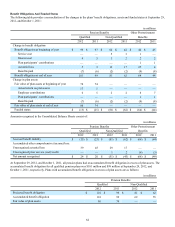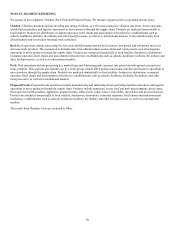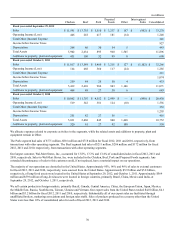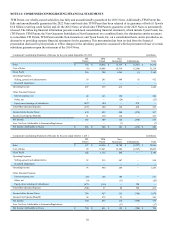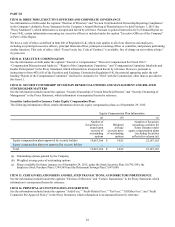Tyson Foods 2012 Annual Report Download - page 74
Download and view the complete annual report
Please find page 74 of the 2012 Tyson Foods annual report below. You can navigate through the pages in the report by either clicking on the pages listed below, or by using the keyword search tool below to find specific information within the annual report.74
On May 8, 2008, a lawsuit was filed against the Company and two of our employees in the District Court of McCurtain County,
Oklahoma styled Armstrong, et al. v. Tyson Foods, Inc., et al. (the Armstrong Case). The lawsuit was brought by a group of 52 poultry
growers who allege that certain of our live production practices in Oklahoma constitute fraudulent inducement, fraud, unjust
enrichment, negligence, gross negligence, unconscionability, violations of the Oklahoma Business Sales Act, Deceptive Trade Practice
violations, violations of the Consumer Protection Act, and conversion, as well as other theories of recovery. The plaintiffs sought
damages in an unspecified amount. On October 30, 2009, 20 additional growers represented by the same attorney filed a lawsuit
against us in the same court asserting the same or similar claims, which is styled Clardy, et al. v. Tyson Foods, Inc., et al. (the Clardy
Case). In both of these cases we have denied all allegations of wrongdoing. In June 2009, the plaintiffs in the Armstrong case
requested an expedited trial date for a smaller group of plaintiffs they claimed were facing imminent financial peril. The Court
ultimately severed a group of 10 plaintiffs from the Armstrong Case, and a trial began on March 15, 2010. On April 1, 2010, the jury
returned a verdict against us and one of our employees, and on April 2, 2010, the Court entered a judgment in the amount of
$8,655,735, which included punitive damages. Subsequent to the trial, the presiding judge disqualified from the cases and the
Oklahoma Supreme Court appointed a new judge to the cases. Following this appointment, the trial court granted our motions for
change of venue and to stay all future trials of plaintiffs in the Armstrong Case and the Clardy Case pending the outcome of our appeal
of the initial Armstrong Case verdict. The trial court took under advisement the sizes of groupings of plaintiffs in future trials in
response to our motion to sever the plaintiffs' claims into individual cases. We appealed the initial Armstrong Case verdict to the
Oklahoma Supreme Court based on numerous irregularities and rulings during the trial, and the Oklahoma Supreme Court reversed
the verdict and remanded the case back to the trial court. At this time, new trial dates in the Armstrong Case have not been scheduled,
nor have trial dates for the Clardy Case.
In late 2010, the United States Environmental Protection Agency (EPA) Region 7 began a Clean Air Act investigation of the Company
related to operation and maintenance of ammonia refrigeration equipment at multiple facilities. The EPA subsequently referred the
matter, which involves allegations of potential non-compliance with the Clean Air Act’s Risk Management Plan requirements at 25
Tyson facilities in Kansas, Missouri, Iowa and Nebraska, to the United States Department of Justice (DOJ). The EPA and DOJ have
indicated they will seek monetary penalties and injunctive relief requiring equipment and infrastructure changes at several facilities.
Currently we are engaged in settlement discussions with the EPA and DOJ.


